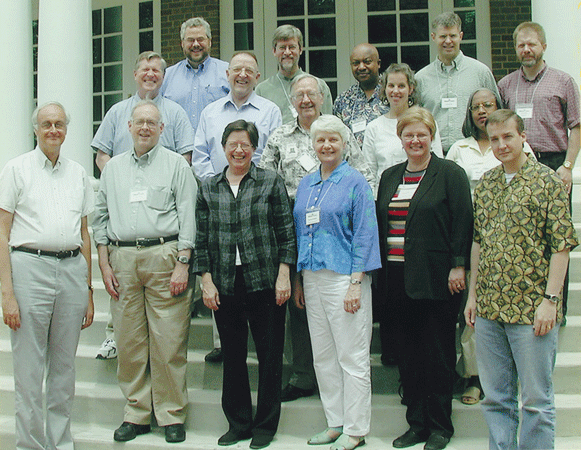2003-04 Colloquy on Teaching Homiletics
May 28-June 1, 2003 – First Session at Wabash College
May 26-31, 2004 – Second Session at Wabash College
Thomas Long, Candler School of Theology
Nora Tubbs Tisdale, Princeton Theological Seminary
Paul O. Myhre, Wabash Center
Goals:
In this two-year consultation, we explored the challenge of teaching preaching to a new generation of theological students and pastors. The primary goal of the consultation was to have the sort of free and wide-ranging conversation among homiletical scholars that names the key issues in the teaching of preaching, challenge basic assumptions, and ultimately leads not only to the identification of those pedagogical approaches and resources that have served us well but also to the creation of urgently needed new approaches and resources.
Purposes:
Our agenda included (but not be limited to) questions such as the following:
• What should we teach? Like most fields in the practice of ministry, homiletics has a split personality. On the one hand, homiletics has a history, a venerable body of literature, an ongoing theoretical conversation, and a rich current debate about approaches. On the other hand, most theological schools require only a smattering of course-work in preaching, and students need very practical, skills-oriented training. How much, and in what ways, should the two sides of homiletics enter the classroom? How much, and in what ways, should the history of preaching, the history of homiletics, the theories of rhetoric and preaching, hermeneutics, and the theologies of preaching, be a part of the “canon” of theological education? What is needed in the rest of a theological curriculum to support the teaching of preaching?
• Who are we teaching? Almost every teacher of preaching faces a wide diversity of students in the classroom, even those who are teaching at very tradition-specific schools. Students are young and older, male and female, liberal and conservative, experienced and novice, headed for the parish and headed elsewhere, and of many different ethnic and denominational backgrounds. How should all of this affect classroom teaching?
• How should we teach? What classroom practices are effective? What works and what doesn’t? When in a seminary curriculum should preaching be taught? How should a basic course be structured? What advanced work should be offered? What resources have proved effective? What new resources are needed? What are the realities, pitfalls, and the potential of new technologies in the teaching of preaching?
• Who should be teaching? What training and experiences are needed for teachers of preaching to be effective? What role should student assistants play? Outside clergy? Adjunct faculty?
• What role should continuing education play in homiletical education? What are the best formats and delivery vehicles for a lifetime of learning in preaching?
• What research is needed in preaching? What should be the research agenda for the next generation? What should a theological school expect of publication and research from those who teach preaching?

Front Row (left to right): Gregory Heille (Aquinas Institute of Theology), Daniel Harris (St. Johns Seminary, Cabrillo), Lucy Lind Hogan (Wesley Theological Seminary), Barbara Lundblad (Union Theological Seminary, NY), *Nora Tubbs Tisdale (Princeton Theological Seminary), James Nieman (Wartburg Theological Seminary).
Second Row: *Thomas Long (Candler School of Theology), Joseph Jeter (Brite Divinity School), James Thompson (Abilene Christian University), Anna Carter Florence (Columbia Theological Seminary), Teresa Fry Brown (Candler School of Theology).
Third Row: Scott Black Johnston (Austin Presbyterian Theological Seminary), Paul Wilson (Emmanuel College of Victoria University), James Henry Harris (Virginia Union University), David Lose (Luther Seminary), *Paul Myhre (Wabash Center).
* leadership/staff